It has been a few months since we have posted an article on the changing wildlife over the course of a year on our barrier islands. I took the month of June off and just could not schedule a hike in July. But it is now August, and we DID get out this week.
This is no surprise… it is hot and humid. I think everyone has noticed this. We are also in the rainy season. Based on the NOAA site I track, we are currently at 45.73” for the year. This is an average of 6.53 inches a month which would lead us to an annual amount of 78” if we keep that pace. This would be another wet year.
This rainfall does a lot to cover up tracks I am looking for. It will spook some creatures into hiding waiting out the weather, but there are plenty of others who enjoy the rain and are more on the move.
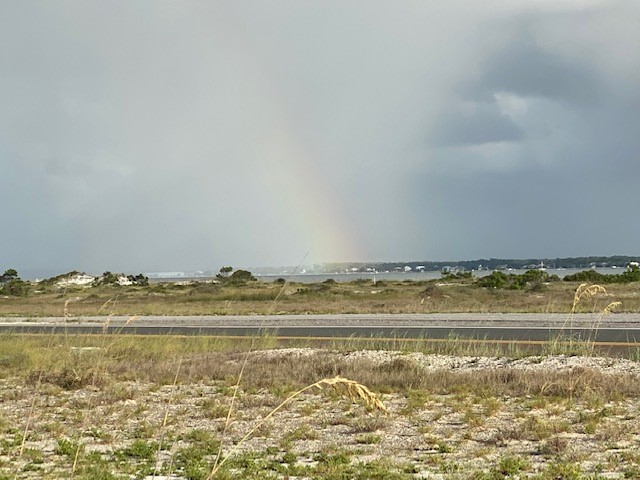
Today I took my grandson with me on the hike. He loves the outdoors and reptiles and amphibians especially. We began, as we always do, walking a section of the Gulf beach to see what we could see.
We immediately encountered a sea turtle nest. I understand that it has been a good year for sea turtles in our neck of the woods. The turtle patrol had roped this one off, but I did see human footprints inside the roped section. We encourage people NOT to do this. Compacting the sand can be a problem and if they hatch and detect vibrations they may not emerge. It is cool to see one, but do not go past the roped section.
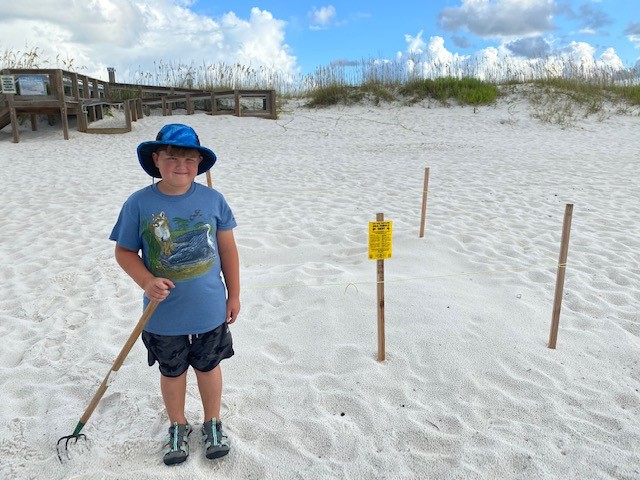
We always search the wrack line for cool things and today we ran into a few. First, there were hundreds of small dead anchovies washed ashore. I am not 100% sure what happened but I am guessing a strong storm came and washed them in. Anchovies are a great source of food for many marine fish and these dead ones will certainly feed the numerous birds and ghost crabs that live along the shores. Anchovies play an important role in the ecosystem and, even though these were dead, it is nice to see them.
We did find several catfish heads. Saltwater catfish are not prized by Gulf fishermen. Many prefer to cut their heads off and leave them on the beach. The thing is that this does little to deter the population of this unpopular fish and the spines can be dangerous for beach combers walking barefoot. But the ghost crabs usually collect and feed on them.
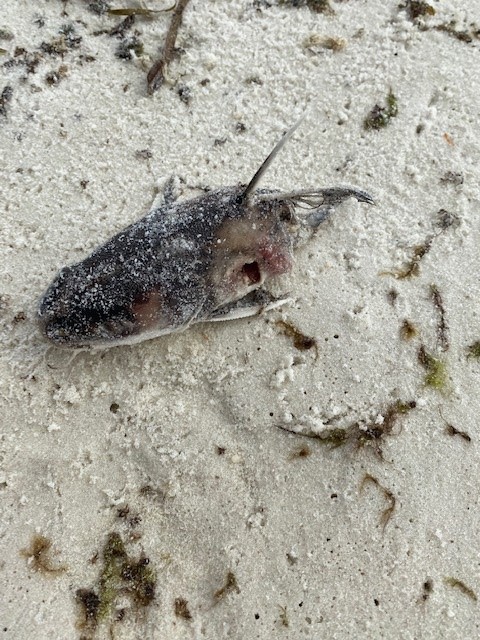
We also found a few comb jellies. These are members of a different phylum (Ctenophora) than the classic jellyfish (Cnidaria). They lack stinging cells and move using their rows of ctenes (cilia) that resemble the bristles of a comb as you run your finger over it. This is where it gets its common name. They do produce blue colored bioluminescence in the evening and are beautiful to watch.
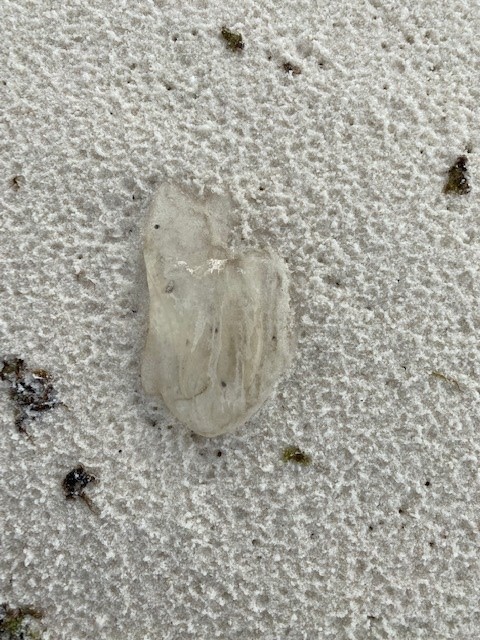
As we crossed the road and enter the dunes, I explained to my grandson how the foredune is dominated by grasses. These plants can tolerate the strong winds off the Gulf and the salt spray as well. On the other side of the road, you enter in the secondary dune field. This region is a mix of grasses and small shrubs, which can grow due to the primary dunes blocking some of the strong Gulf winds.
Today we saw several species of flowers in bloom. Different plants bloom at different times of the year and it is neat to see who is blooming at different times. The low swale areas were full of growing plants and flowers. There were plenty of sundews and ground pine. Some standing water but much was dry. We did find a plant in one of the wet swales I did not know. I am listing it here as redroot but I am not confident in that identification and would love if someone who knows it will share its name.
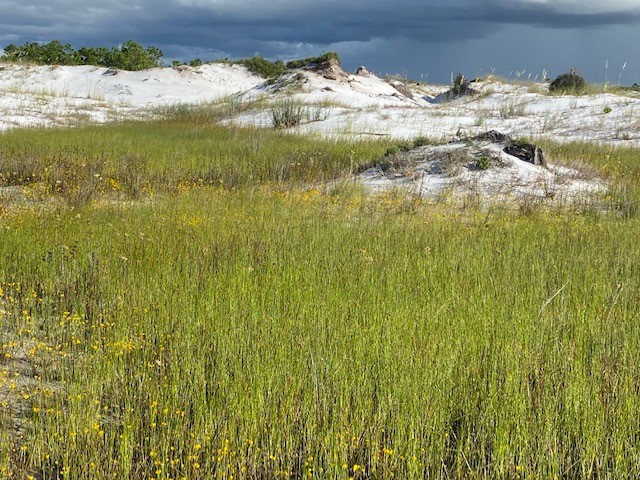

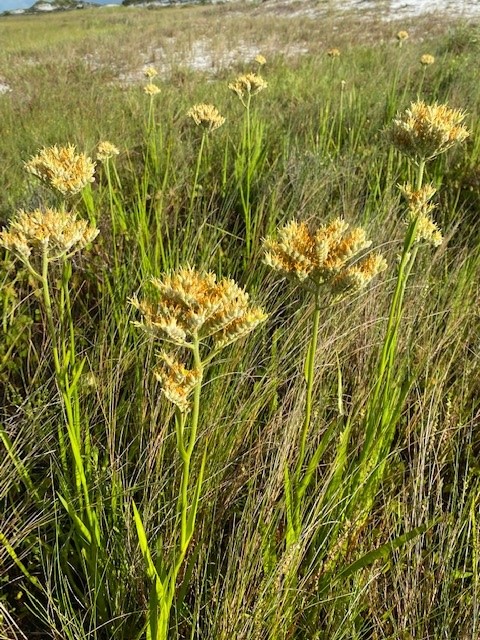
There were numerous tracks of armadillos but little else from the animal world. Again, the rains wash them away. The milkweed was still blooming awaiting for the now listed monarch butterflies. And the beach side rosemary was releasing its characteristic odor that says “Pensacola Beach” to me. The plants looked great and seem to enjoy the rain. FYI – we did get rained on during the hike, but not too bad. We had seen the parasitic dodder earlier in the year and the vine was still evident in August.
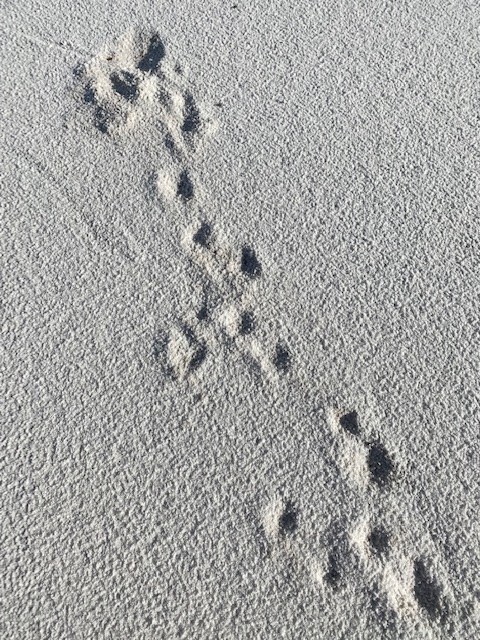
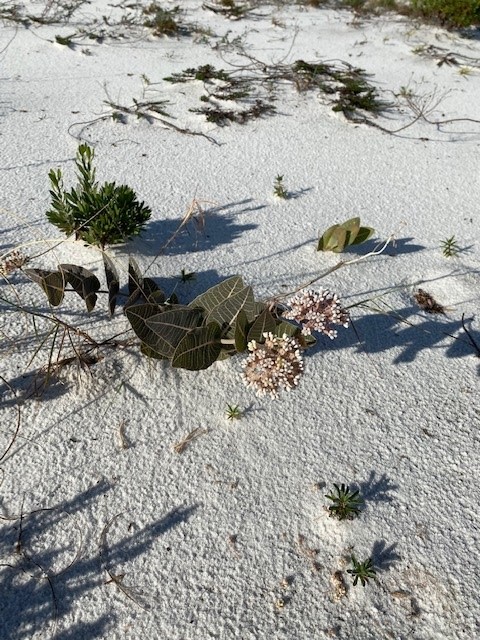
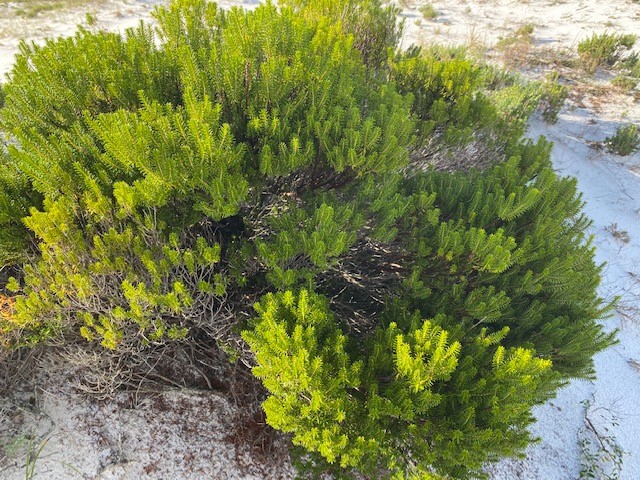
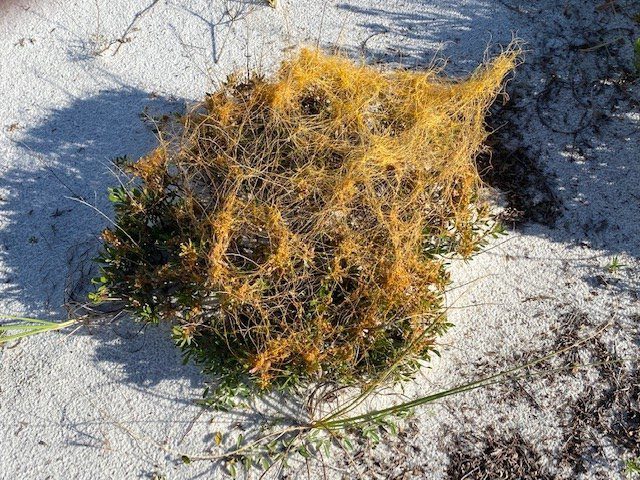
In the tertiary, or back dunes, is where I always hope to find tracks or animals of some kind. Today there was little evidence of any. There were raccoon tracks moving along the edge of tallest dunes and along the trails leading to Santa Rosa Sound. But not much else. The pines were bearing their cones and the sweet bay magnolias had their young blossoms forming.


One species my grandson did not enjoy were the numerous devils’ joints. This branching cactus has very sharp spines and were all over the back dunes. We had to stop and remove them several times. He definitely wanted to find a different way back!
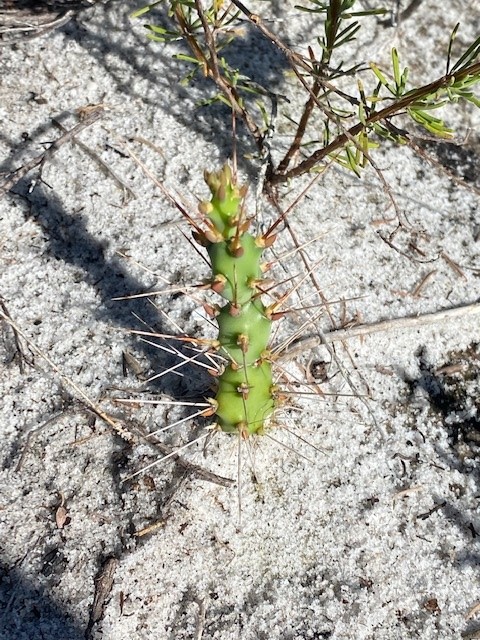
We did reach the Sound and walked along its edge towards the old fish hatchery. He saw TONS of fish (as he put it) and the grass looked thick and healthy. We did get to explore and talk about the old fish hatchery. And then headed back towards the Gulf and our truck.
I think we got started a bit late to see a lot of the wildlife. This time of year, they will be hunkered down somewhere early in the morning to prepare for another hot day. With the overhead clouds I was hoping to see some movement, but we did not. We will try earlier in the day in September.
I hope you get out and explore our barrier islands. They are fascinating places. But plan to get into the water this time of year. We did. It was hot. We went snorkeling and saw numerous pinfish, a flounder, and snapper, and a nice sheepshead. This is a good way to spend the hot parts of the day. Let’s see what September may bring.
- Our Environment: Part 11 – We Need Water - July 7, 2025
- Our Environment: Part 10 – Improving Agriculture - June 20, 2025
- Marine Creatures of the Northern Gulf – Snails and Slugs - June 20, 2025
